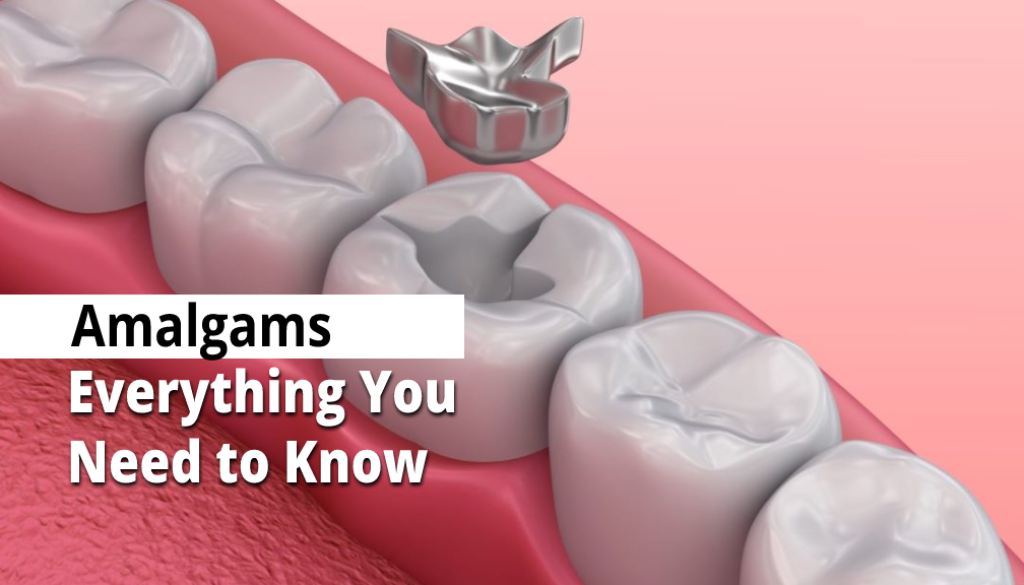
Amalgams, commonly referred to as filling or “silver fillings” because of their appearance, have been used for many years for restorations in dentistry to fill cavities caused by caries.
Dental amalgam continues to be recognized as one of the most successful direct restorative materials. It is especially recommended for patients at moderate to high caries risk and for repairing posterior and some anterior teeth with missing tooth structure.
Because it is much softer than steels and other metals, and in terms of chewing performance, it is excellent, this amalgam filling can last for decades. Thus, it is a predictable and cost-effective restoring option.
For these reasons, dental societies and the scientific community recommend amalgam as a safe, easy, durable, and bacteriostatic material.
Dental amalgam is created by mixing liquid mercury with an alloy of solid particles of copper, silver, tin, and zinc used to fill cavities in teeth. The combination of these solid particles is known as amalgam alloy, and it is made using an amalgamator for mixing.
Under proper safety conditions, the dentist mixes the powdered alloy and the liquid mercury in the amalgamator. This mix is called the amalgamation reaction and, this will result in a silver-gray processable mass that can condense in the cavities.
When placing dental amalgam, the dentist first drills the tooth to remove decay and then shapes the tooth cavity to set the amalgam fillings. After condensation, the metallic fillings are contoured to generate the necessary anatomical features and then harden over time.
There are several chemical forms of mercury: elemental mercury, inorganic mercury, and methylmercury. The type of mercury associated with dental amalgams is elemental mercury, which releases mercury vapor. The body processes these forms of mercury differently and has different tolerance levels.
The unique properties of mercury will make it an essential component of dental amalgams, which. When ideally placed, they are the most durable and the least technically sensitive of all restorative materials.
When aesthetics is not a concern, it can be used in individuals of all ages, as a base for cast metal and ceramic restorations, and in poor oral hygiene conditions. In addition to all these advantages, concerns have arisen that amalgam causes mercury toxicity.
The principal exposure to mercury from dental amalgam depends on the number, size, and composition of the restoration, chewing habits, food texture, tooth brushing, and many other physiological factors that occur during dental amalgam placement or removal. Once the restoration is complete, minimal mercury filling is released, well below the current health standard.
Although amalgam is capable of causing delayed hypersensitivity reactions, in some individuals, if recommended hygiene procedures are followed, the risks of adverse health effects could be minimized.
Although the use of amalgam is considered safe by the dental community, improper disposal of elemental mercury in medical waste bags can result in the incineration of this product and the release of mercury into the air from incinerator stacks. This airborne mercury is then deposited in water and contaminates the land. Responsible handling is therefore essential.
If dentists do not correctly manage dental amalgam waste, it can be disposable into the environment. Although most dental offices now use amalgam separators to reduce the number of mercury fillings passing into the sewer system, dental offices are the largest source of mercury at wastewater treatment plants.
The high level of metallic fillings released into the environment would affect the biosphere, especially the aquatic ecosystem, causing dangerous levels of mercury in local fish.
In humans, this exposure poses a greater health risk to particular groups of people, such as pregnant women and infants, who may be more susceptible to the potential adverse effects generally associated with mercury.
Information reviewed by the FDA over the past two decades points that dental amalgam fillings are safe for adults and children over the age of six. The FDA regulates dental amalgam as a medical device and ensures that it is reasonably safe and effective. FDA also assures that product labeling for dentists has adequate directions for use and includes an enforceable warning.
In addition, the Environmental Protection Agency (EPA) has officially signed and submitted the final rule on dental amalgam that came into effect in July 2020.
This rule applies to all dental offices that discharge their wastewater to a Publicly Owned Treatment Works (POTW), including large institutions and dental clinics.
The EPA rule requires most general dentists to install an amalgam separator to prevent mercury contained in dental amalgams from entering the air, water, and soil and states that all installed amalgam separators achieve at least a 95 % removal efficiency. The implementation of this standard will contribute to reducing global mercury pollution in the coming decades.
The safest way to use mercury in amalgams is to have the correct tools for its preparation and removal. Therefore, the amalgamator plays an essential role in mixing the components for an amalgam, as does the amalgam separator in the disposal of particulate residues.
A modern amalgamator with its computerized mixing system operating under microprocessor control ensures accurate, controlled, and consistent mixing. An amalgam separator reduces the amount of amalgam entering the drainage system through different mechanisms.
That’s why at Dental Assets, we have the best quality equipment that helps care for the ecosystem and meets EPA requirements. Visit our catalog to find the best amalgamator and amalgam separator that your dental office needs.

17821 E 17th St
Ste 180
Tustin, CA 92780
*Opt-in / Opt-out
**Customers provide their phone number and consent to receive messages via a form on our website